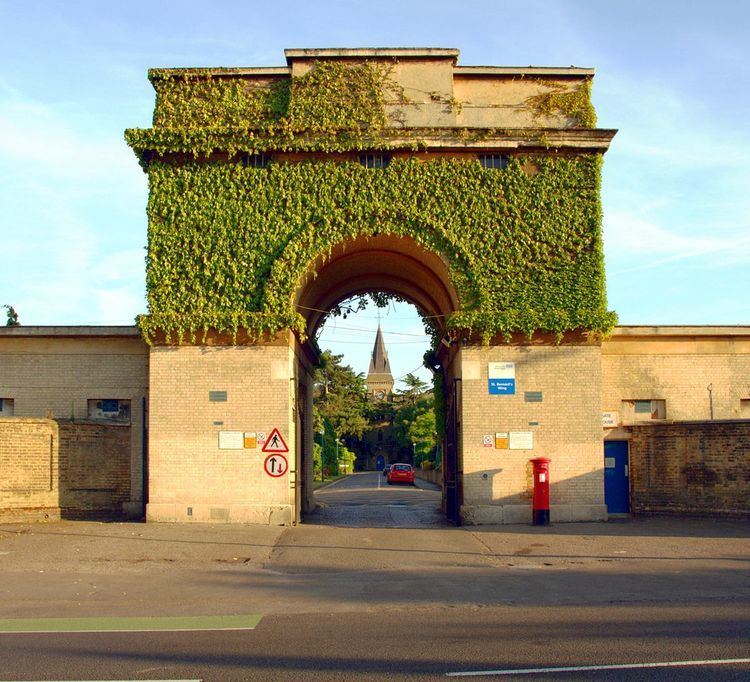Place Southall Psychiatric ICU present? Yes Local Secure present? Yes Hospital type Psychiatry | County Greater London Adolescent Secure present? Yes- male Phone +44 20 8354 8354 | |
 | ||
Trust name West London Mental Healthcare NHS Trust Address Regional Secure Unit, St Bernard’s Hospital, Uxbridge Rd, Southall UB1 3EU, UK Hours Closed today SaturdayClosedSundayClosedMonday9AM–4PMTuesday9AM–4PMWednesday9AM–4PMThursday9AM–4PMFriday9AM–4PMSuggest an edit Similar Broadmoor Hospital, Ealing Hospital, Rampton Secure Hospital, Cassel Hospital, Charing Cross Hospital | ||
West London Mental Healthcare NHS Trust (WLMHT) was established 1 October 2000.
Contents
- History
- Forensic services division
- Clinical Service Units and Service Lines
- Geographical spread
- Corsellis Collection
- Other trusts
- References
The headquarters is at 1 Armstrong Way, Southall, near to the St Bernard's Hospital site. This is on the south side of the Uxbridge Road between the towns of Southall and Hanwell and 8½ miles west from London, in the Southall district of the London Borough of Ealing, Greater London, England.
Services are spread across 25 sites, notably including Broadmoor Hospital, and the trust employs around 3,500 people, serving a local population of over 700,000 and treating more than 35,000 people each year. Due to its larger remit there are seven executive directors, and eight non-executive directors. Currently the trust is in the process becoming a NHS Foundation Trust. It has been embroiled in a series of controversies, however, involving millions of pounds of unaccounted overspend, poor Care Quality Commission reports and whistleblower allegations of a bullying management style; the Chief Executive retired in 2015.
History
The trust's services based at St Bernard's Hospital in west London occupy some of the original buildings once known as Hanwell Asylum.
Here the first superintendent Dr (later Sir) William & Mrs Mildred Ellis who were so much impressed with Moral therapy and humane treatment they saw offered to people suffering Mental disorders at the Quaker Asylum in York that they both imposed these methods on the staff at Hanwell. This was as such the very first large scale experiment. The second superintendent brought mechanical restraints – as a form of treatment – back. The third superintendent Dr John Conolly against stiff opposition backed up with much vitriol, took the example further, and did away with all mechanical restraints. To the surprise and disbelief of many he found, like the Ellises before, that bedlam diminished, behaviour became less defensive and cooperation improved dramatically, and many recovered or much improved. This event added to his other pioneering work such as developing proper diets and conditions for his patients and battles to set up regular training lecture specialising in mental health, for doctor training, all led to him receiving worldwide recognition.
Broadmoor high secure hospital: In order to end the isolation suffered by the high secure services from the rest of the NHS, the Health Act 1999 was passed, allowing NHS Trusts to provide for these. After a three-month consultation in the early part of the following year it was agreed that the high secure services based at Broadmoor and those provided by the Ealing, Hammersmith and Fulham Mental Health NHS Trust should be combined into one organisation. This created the existing West London Mental Health NHS Trust, which took over governance in 2001.
Forensic services division
In November 2004 a new directorate, the Woman's Secure Services was created. This was to separate the medium secure women's facilities from the Broadmoor high secure site and relocate them on the Ealing site.
Clinical Service Units and Service Lines
In 2014 the trust restructured so that it now delivers services from two clinical service units - High secure and forensic services, and local and specialist services. It has seven service lines - high secure services at Broadmoor Hospital, west London forensic services, liaison and long-term conditions, access and urgent care, primary and planned care, cognitive impairment and dementia, Child and Adolescent Mental Health Services (CAMHS) and developmental services.
Geographical spread
WLMHT either run or provide services at the following sites:
Corsellis Collection
The WLMHT currently act as guardians of the Corsellis Collection, containing some nine thousand specimens of brains dating back to the 1950s. The Corsellis collection was originally housed at Runwell Hospital until the 1990s when a major reprovision programme was envisioned; the collection was started at Runwell Hospital by Dr John Corsellis. No larger depository of this speciality is known.
Other trusts
On the same grounds as St Bernard's Hospital is Meadow House Hospice which is run by London North West Healthcare NHS Trust.
